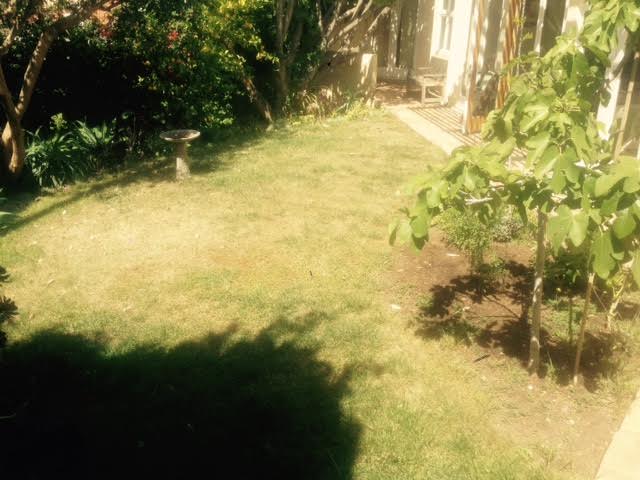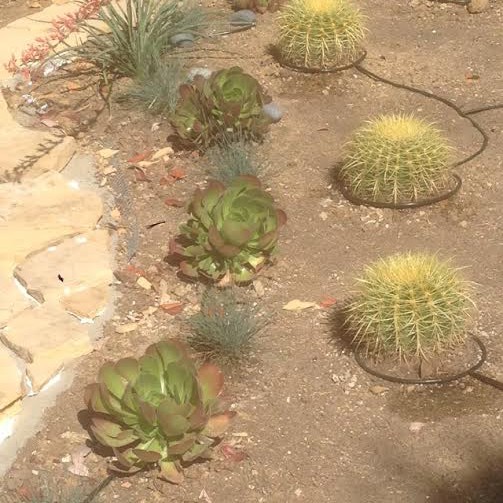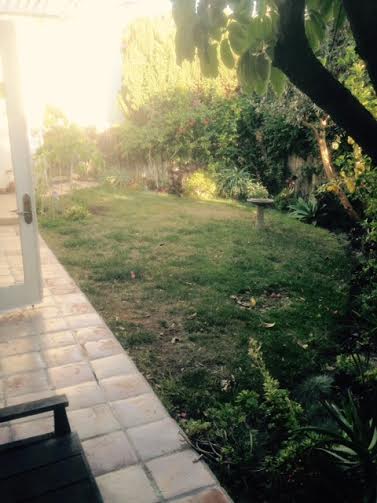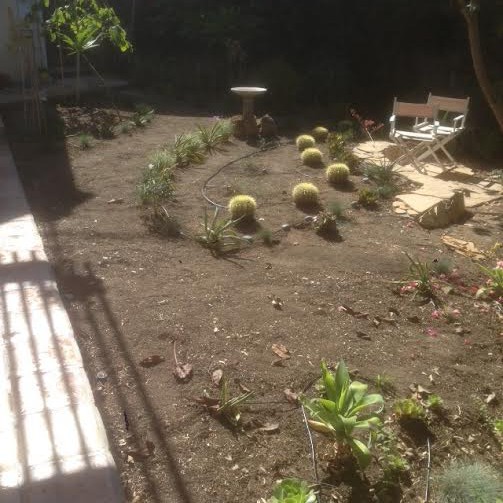The drought tolerant garden and front curb are almost complete needing only the final but vital drip systems to be installed. The drip system will deliver water to the location of each plant set on a timer for 10 minutes twice weekly to begin with and then hopefully on a weekly plan.
Stages recapped;
Soil and root removal.
We removed about 2” of top soil and dug up as many roots from the old grass as we could, this was laborious hard work but meant that no weed killer or other toxin was used in the process.The remaining soil was then compacted manually with a tamper.
Planning areas, laying weed barrier, adding top layers
The garden was mapped out with stakes separating areas that would be pathways and seating from areas devoted to plants. A shallow 2” trench was dug along the perimeter separating these areas and a flexible 4” barrier was laid down and secured with plastic stakes. The entire area was then covered with a black cloth weed barrier. For the pathways and seating areas we then added 2” of sand colored decomposed granite which was applied in successive layers, each layer being compacted using both a mechanical vibrating plate compactor and a tamper in more confined spaces. For the pathway and seating area and before adding the d.g. we placed random shaped 2” thick stone. As the d.g. was stabilized each compacted layer was sprayed with water to activate the stabilizing bonding agent.
Where we were adding plants, we cut through the weed barrier and dug out a hole for each plant before filling with a combination of sand and enriched planting soil. The front curb was then finished with another layer of d.g. again compacted and activated with water.
We used loose sand around each of the plants in the front garden and finished this with pea gravel. We have reconsidered this plan as we are concerned that the pea gravel may retain too much heat to the detriment of the society garlic. As a remedy we will be pushing the gravel away from the garlic to create a berm to keep the garlic surrounded by cooler sand.












